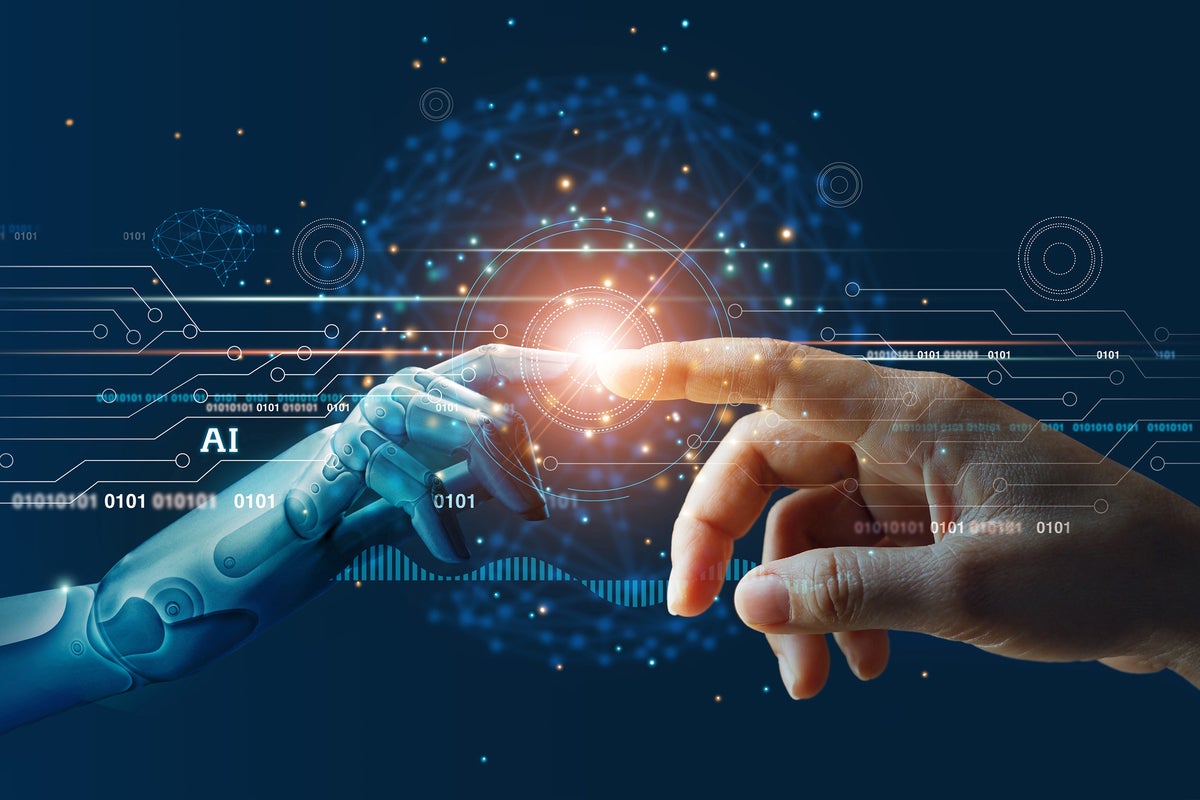摘要: More organizations will tune into the far-reaching benefits of a symbiotic human-AI relationship in the coming year. Here’s how.

▲圖片來源:ipopba / Getty Images
The rise of AI-enabled technology is being felt in nearly every aspect of our lives—and the rate at which it is being adopted is exhilarating. These rapid technological advancements offer significant benefits to any business, large or small, that welcomes their benefits, from expediting repetitive tasks and accelerating data analysis to augmenting human capabilities.
It’s evident that 2021 sparked a shift in AI adoption and openness to the technology—partially due to the pressures the pandemic put upon businesses to digitally transform and adjust their work dynamics. In fact, 52% of organizations pivoted to adopt AI solutions sooner than they had expected and cited the pandemic as the reason.
Tomorrow’s leading businesses have an opportunity to welcome technology that can radically change the way work is done for the better. When reflecting on the future uses of AI, I foresee three ways that approaches to the technology will evolve and help organizations of all sizes grow in the coming year.
AI adopters will embrace networks of narrow AIs
In recent years, AI has become a behemoth technology that has inspired companies to think big. But with so much speculation surrounding the technology, its implementation, and its business use cases, many organizations have yet to scratch the surface of its far-reaching capabilities. Rather than force AI to be one large, complicated initiative designed to manage numerous complex tasks, organizations need to think smaller—and embrace a network of narrow AIs.
When deployed to accomplish specific tasks, narrow use cases of human-led AI can ignite projects intended to have different AIs communicate and coordinate with each other. This approach requires distinct data and a predictable sphere of influence to be effective, which is why human involvement and buy-in are critical for its success. A recent study found that nearly a quarter (23%) of consumers are unlikely to trust recommendations informed by AI-enabled tools, which must change to truly embrace narrow AI. This will come when organizations demystify the seemingly elusive technology, so adoption is seamless and welcomed more broadly.
AI adopters will reimagine employee workflows
One of the most considerable obstacles to enterprise-wide AI implementation is workflow design. Far too often, new technology solutions are introduced without considering the full technology stack or employee workflows, especially as organizations try to make hybrid work work. Leaders must design workflows where the AI and the full tech stack fit seamlessly within the organization, without being a disruption to employees.
Many regard AI as a tool that informs human decision-making. Organizational leaders must consider how AI systems are set up today and how to evolve them to be more purposefully designed to create symbiotic human-AI relationships. There are countless, brilliant AI solutions today, but a well-planned workflow implementation and design plan is the only way to ensure that AI will support the entire workforce from the top down.
AI adopters will rethink customer self-service
One of today’s biggest CX pain points is the lack of consistent, quality customer service and the over-reliance on customer self-service. From labor shortages to work challenges that have plagued organizations of all sizes and industries, the over-emphasis on self-service as a long-term solution will face a backlash in 2022.
The work challenges brought on by the pandemic have highlighted just how valuable it is to be fully staffed, where new teammates have the time to train and learn from their colleagues. But, as this is not the reality for many, it will be critical to find new paths forward. Technology solutions like human-led AI can help companies monitor customer-employee interactions and provide insights that improve performance in the moment, when insights are needed most.
While it will take time to adopt more human-centered technology solutions, the backlash against self-service is narrowing this time frame. Organizations that rely on self-service will be at a competitive disadvantage versus organizations that successfully integrate self-service with AI-enhanced, human-led service. The latter offers similar efficiencies without a corresponding drop in customer satisfaction.
AI has proven that it’s here to stay—and this past year we’ve learned that we still need human intervention to manage, monitor, and guide the technology for its future success. Looking ahead to what 2022 holds for technology, I expect that more organizations will tune into the far-reaching benefits of a symbiotic human-AI relationship and will be more thoughtful about how to capitalize on its potential.
Here’s to an exciting year ahead.
轉貼自Source: infoworld.com
若喜歡本文,請關注我們的臉書 Please Like our Facebook Page: Big Data In Finance


留下你的回應
以訪客張貼回應